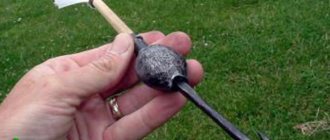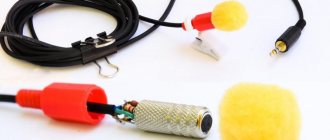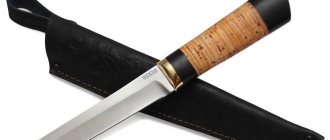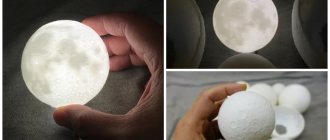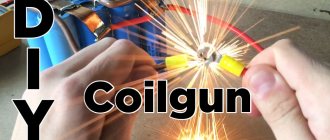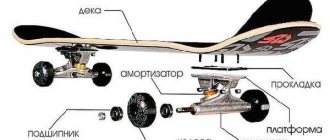Surely you have had problems finding a suitable sketchbook, or there is nowhere to buy it, since there is no art store nearby, or it is too expensive. In this case, it is easier to create a sketchbook at home. Both sheets for watercolor and drawing are suitable for it, or you can use both types. The cost is low - after all, for a DIY sketchbook you only need paper and glue.
Types of sketchbook
There are mainly several categories:
- for markers (drawing with art markers);
- for watercolors (in such notebooks the paper is a little thicker, a little rougher, and holds water well);
- universal (drawing with watercolors, ink, pastels, pencils...)
Sketchbooks come in different shapes: square, rectangular, elongated.
Using the album
Question: “What should I draw in a sketchbook? – the smallest drawing lovers ask, and only when they are urged not to waste the pages of the album in vain.
In art schools, children also begin to learn to draw not on easels, but on album sheets.
They are used not only by those who are passionate about creativity. In moments of leisure, many people develop a craving for fine art. So why not implement it using an album or notepad?
Is it possible to create a sketchbook yourself?
On the Internet you can easily find a variety of photo sketchbooks for every taste and design.
But you can create it with your own hands, the main thing is to stock up on the necessary materials, patience, time, and use your imagination as much as possible.
There are a lot of advantages to a sketchbook created by yourself:
- To create, you can use paper according to your requirements and taste. For example, not plain white, but tinted watercolor paper.
- You can create from as many sheets as you need.
- A homemade notebook will cost less than a store-bought one.
- It will be individual, in a single copy, according to your own taste and style.
Album selection
There are a huge variety of drawing styles and directions. If you look through the catalog of albums and notebooks offered on the Internet, you will definitely find in this sea of proposals the photo of the sketchbook that you like best.
The design is developed taking into account age groups. If covers depicting cartoon characters are closer to children, then adults will obviously not be happy with such a picture.
Creative people working on new collections prefer to have small paperback sketchbooks. So, at any moment, taking it out of their pocket, they will sketch a new idea.
What you need to create a sketchbook
To make a stylish notebook like this with your own hands, you need to prepare:
- sheets of paper for drawing, their number as desired;
- paper for cover and pocket, color as desired;
- decorative paper for endpaper;
- thick cardboard;
- scissors, stationery knife, brush;
- pencil eraser;
- thick thread, thick needle, awl;
- office clips;
- ribbon for bookmarks;
- glue gun, rods for it.
We recommend reading:
- DIY polymer clay jewelry: review of the best master class with step-by-step instructions for beginners (150 photos of original ideas)
- DIY polymer clay flowers (120 photos of the best ideas) - simple instructions with full description + master class and video tutorials
- Quilling for beginners (200 photos) - step-by-step instructions with description. The best master class on creating quilling crafts with your own hands
Necessary materials
To create a sketchbook you will need a minimum of materials:
- Paper. Its quantity and quality depend on a person’s budget. Watercolor or with textures - depends on the choice. The number of sheets also depends on how often the artist draws. You can find a variety of papers on the market today.
- For the cover you will need colored paper with patterns. For example, paper is often used to wrap gifts. In order to make it harder, it can be combined with thick cardboard.
- Glue. Both a regular stationery glue stick and PVA will do.
- Needle and thread. Necessary for sewing leaves together.
- Stationery knife.
- Ruler – for smoother edges.
- An awl to make even holes for the stitching.
- Scissors.
A simple workflow for creating a sketchbook
On the Internet you can find different instructions on how to make a sketchbook, one of the simple ones:
You need to bend the sheets in half and put them inside each other. Using an awl, pierce the paper on the fold so that you get 4 holes at the same distance both below and above. Using a thread and needle, sew the sheets along the holes.
With this fastening, you can open the sketchbook 180 degrees without fear of pages falling out. It is also convenient and practical for drawing.
Use black cardboard to make a cover for your notebook. Measure all dimensions, cut out and glue the endpaper and title page with hot glue. Glue the bookmark-braid to the spine of the notebook.
Place the finished accessory under a heavy book or any other object so that all the pages are pressed well.
If you wish, you can decorate the sketchbook to suit your design using a variety of materials.
We recommend reading:
DIY paper orchid - a review of the best ideas and tips from craftswomen. Step-by-step instructions + master class (photo + video lessons)- DIY paper hyacinth: the best master class for beginners with step-by-step instructions and diagrams from A to Z (130 photos)
- Paper stars - instructions on how to quickly and easily learn how to make beautiful stars with your own hands (100 photos of finished works)
How to design the first page of a sketchbook
The first stone you might stumble over when starting to keep a brand new sketchbook is, of course, the fear of a blank sheet. As in painting, the fear of an empty canvas, so the title page of a sketchbook, is always scary and incomprehensible.
What to write? What to draw? And if I mess it up, it will remain here forever First of all, you won't believe it, but even if you mess up or don't like what you drew on the first page, you can always rip it out of your sketchbook . Yes, it's that simple. And a little advice, if you are really afraid, buy a sketchbook with a spring or rings. This will make it easier to pull out.
Secondly, if the fear is very great, start not from the first page, but from the tenth. Or even from the end. Yes, that's possible too.
And thirdly, don't demand too much from yourself. Just draw some doodles or make a funny inscription, or just paste in a drawing/reference you like that you strive for and want to repeat one day (even if it’s Van Gogh’s “Starry Night”).
And remember, there are still a lot of sketchbooks. You can change them, buy new ones, remake old ones. We now have a lot more choice, so let's not be afraid, but just start drawing!
Cover page decoration
The title page is one of the important pages; you want it to be beautiful, unique, individual... When you create a sketchbook for drawing with your own hands, you can implement original sketchbook ideas for the design of the title page.
Using various paper, leather, braid, organza, beads, decorative pebbles, felt and other materials, you can create a stylish individual cover for your sketchbook, tailored to your design and theme.
If the notebook is used for sketches of clothes, sketches of fashion accessories, then an option is to decorate the title cover, depicting a girl in a stylish dress, where the dress can be cut out of a piece of chiffon and glued with glue.
Criterias of choice
When choosing the sketchbook you need, you can’t focus only on a beautiful design. There are some features that you need to pay attention to first when choosing:
- Paper quality. It varies in quality, colors, texture.
- Album size. The industry produces small notebooks for street sketches, or sketches of a spontaneous idea. For careful drawings or voluminous paintings, there are large-sized albums.
- Format. To select the desired format (rectangle, square), you need to analyze what result you want to have.
- Binding. It’s easy to decide on this question. If you want the pages to fully open, you need to purchase an album with a spring connection of the pages. If this is not essential, then a rigid mount will do.
- Cover type. Depending on the intended use, choose the type of cover. A hard one is necessary in cases where it is assigned the function of a table.
The design is chosen according to the taste preferences of the buyer.
Coffee themed cover page decoration idea
Coffee is the most popular drink in the world. Often creative people keep a sketchbook on this topic. It’s so wonderful to paint your masterpiece over a cup of aromatic foamy drink.
An album with such drawings looks beautiful if it is also decorated in the same theme. Here's a good idea on how to decorate the title page of a notebook:
- On the cover, draw with a pencil a mock-up of a coffee cup and saucer.
- Using coffee beans and a hot glue gun, carefully glue the beans along the contours of the cup and saucer.
- The base of the picture can be decorated with watercolors and decorated with sparkles.
We recommend reading:
A paper crown is a simple instruction for creating original jewelry with your own hands. Templates, diagrams, master class, exclusive design (110 photos)- Weaving from newspaper tubes for beginners: the best free master class, with step-by-step instructions. Photos, diagrams, unusual ideas, videos
- Paper rose - how to make it yourself? Step-by-step instructions, original ideas, photos, videos, master class
Such a stylish design will look great, delight you with the coffee aroma for a long time, and inspire new masterpieces.
Beautiful albums
The concept of beautiful sketchbooks is an entirely subjective category. So many people, so many opinions. Here it is necessary to take into account the age, gender, and social status of the owner of the album.
Young people prefer to have pictures in fantasy format both on the cover and inside the album. Business people prefer to have images of innovative technology.
Women who are passionate about fashion sketch new styles and models of products. They also prefer to see the image of a famous stylist or top model on covers.
What can you draw in a sketchbook?
You can draw anything you want, any objects, still lifes, landscapes, graffiti...
You can also use different materials for drawing: watercolors, pencil, gel pens, markers, wax crayons, ink...
Everyone chooses the drawing tool that is easier to draw with and more convenient to carry. As a rule, when maintaining such a notebook, it is always present with the owner - inspiration can arise at any second.
Notepads for Beginners
New, unusual ideas come to creators regardless of the time of day or location. Often, a landscape seen on the road so captivates the artist’s feelings that he immediately begins to make sketches.
The Internet is now replete with various options for pictures for sketching.
Sketchbooks for sketching serve as a good tool for work, both for eminent artists and for lovers of creativity. They are always at hand at the right time.
Note!
How to make a rose from paper - the best ideas for DIY crafts + master classes on creating a rose from paper (160 photos)- Craft letter - TOP 120 photo reviews of craft letter. Simple diagrams + step-by-step DIY instructions
- Crafts made from nut shells: the best step-by-step master classes on creating DIY crafts with photo examples of finished works
Good Themes for Sketchbooks
When a beginner doesn’t know where to start with his first sketchbook, then you can find different options for drawings for a sketchbook with your own hands on the Internet and start from them. The main thing is to choose a topic in which you want to work.
Popular topics include:
- landscapes (sea, city, park);
- figures and portraits of people;
- animals;
- architecture;
- various patterns, ornaments, fonts, letters with monograms;
- drawings on culinary themes;
- drawings on the theme - fashion.
Album drawings
People with albums and sketchbooks always stand out from the general crowd. These are creative people, obsessed with new ideas that come to them at any moment. Their albums are filled with drawings inspired by something they saw. Drawings for a sketchbook are very diverse, it all depends on the skill level of their owner.
Beginning artists sketch elementary pictures: dogs, cats, hats, figures of animals and beasts. Experienced artists and designers make sketches from life and translate ideas into drawings.
Tips for Keeping a Sketchbook
- If the drawing does not come out as expected, you can move to a new sheet, but you cannot tear out the page.
- Draw every day, even for a few minutes.
- They are not afraid to try using stamps or another drawing tool.
- Put a date on each sketched page.
- Keep a notebook always at hand; the desire to create a sketch can arise at any time.
How to start drawing
So how do you start drawing in a sketchbook?
First, decide what you will draw and with what. The type of paper and even whether you will have a sketchbook on rings or like a regular notebook will depend on this.
Choose the one in the store that you like best in appearance. But don’t worry too much about choosing, otherwise you may not be able to choose the right one.
Let go of perfectionism. You shouldn’t blame yourself once again for the fact that you don’t get perfect drawings like professional artists. Don't compare your beginning to someone else's middle.
If you have absolutely no idea what to draw, use someone else’s. Watch several master classes (for example, at our school) and make your first drawings using them. Believe me, the main thing for you will be that you start drawing and then ideas will begin to come. Like appetite while eating.
Look at your old work. Perhaps you can find inspiration there too!
Develop the habit of drawing every day! Give yourself at least a month of constant drawing to get used to the new format.
Leave room for experimentation! It is not necessary to focus only on drawing. You can fill the sketchbook with inscriptions, collages, and even photographs, as well as dried flowers, cinema or theater tickets, and in general a variety of memorabilia that can be pasted into the sketchbook!
DIY sketchbook photos
Did you like the article?
0
Functional focus
Albums and notebooks are used not only by creative people, but also by those who do not particularly rely on their memory, collecting photos, recording interesting incidents from life. They are used as a working tool:
- for sketches;
- records;
- collecting photos;
- creating collages.
- creating a traveler's diary;
- comics.
For work in albums, different drawing techniques are used: pencil graphics, drawings with watercolors and acrylics, and felt-tip pens.
“Sketch books” are becoming increasingly popular in modern life. They are like a chronicle of achievements of creative success, reflections of life moments, a collection of ideas, kept in families. They are periodically viewed, refreshing fragments of family and personal life in memory.
Making the cover
Using the same glue when gluing the frame. We spread it along the entire spine, securing the edge with cardboard and clothespins in advance. Glue the same fabric that was used for stitching.
We cut out two symmetrical rectangles that are equal to the format of the sheets. Between them we put fabric, which is absolutely identical in size to the size of the spine. This diagram should be on the fabric or leather that will be the cover. The indentation should not exceed 4 cm.
We glue the fabric onto both parts of the cardboard, not forgetting the spine. The notebook cover is almost ready. All that remains is to attach it to the sheets, which won’t take much effort.
We also coat the first sheet with glue, do not overfill it, but so that there are no empty spaces. Glue it to the finished cover. We do the same on the other side. And now, the notepad is ready. It is suitable both for your own use and as a gift to relatives, friends or loved ones.
Different types of notepads and their main features
Any notebook can be easily made using general and simple technology, but first it is important to understand the types of these products. They may differ in design and decor, internal filling and size, and each will have its own purpose and intended use.
Travel book
The general idea of designing a travel book (travel notebook) is similar to photo albums, but has its own nuances:
- You can write your own thoughts and observations under photos from your vacation or trip;
- You can paste memorable tickets and labels, notes and wishes into your travel book;
- free sheets are used to plan future trips and vacations.
This gift will come in handy for those who value their freedom and love tourism in all its forms, from trips out of town to tours to exotic countries.
Art book
A book for art, and this is how the name of such notebooks is translated, is most often given to creative individuals who cannot live a day without drawing. To design such a gift for yourself or a friend, choose any interesting topic related to the hobbies and favorite activities of the future owner.
For ease of drawing, such notebooks most often come with a hard cover or cardboard base and flip-over sheets. They are often prepared in the form of a small album made of high-quality, thick paper, which is good for drawing on with markers and glitters, paints or pencils.
Smash book
The smashbook got its name from the English word, which literally translates as “destroy,” which determines its specificity. Such personal diaries can be kept throughout the year, recording your meanings, dreams and experiences in them, and then destroy them and start a new diary.
What other types of notepads exist according to their intended purpose?
Using your creative skills and inspiration, you can make various paper products with original designs:
- Junk-book, such a product is very interesting to make with children, junk-book is a colorful and variegated creation from scraps of colored paper and labels, leftover colored paper and postcards, magazine sheets and other little things;
- Cook-book, in such notebooks, the image of dishes is combined with a recipe, and pictures can be cut out from magazines or drawn with your own hands; a self-made cookbook is a wonderful gift for cooking lovers;
- A dream book, a notebook for dreamers and those who like to immerse themselves in the stream of their consciousness, such crafts have no restrictions on the style of design and if you use the means at hand, its cost will be zero, and the pleasure will be maximum.
For everyday use, the simplest mini notebooks are made, which may not have a cover, and white paper is replaced by colored sheets.
Leather design
A very elegant way to elevate a homemade notebook is to use leather as a cover cover. Soft and textured, durable and practical - this is exactly what leather-treated binding is. This material can have any origin: from an old bag to unusable shoes.
The main thing is to avoid using leather that gets dirty or smells bad. And, of course, do not work with skin that has foreign interference that could speak volumes about where the skin came from.
Bake plastic
This design method allows the use of special liquid plastic. Proper handling of it will transform your composition into a unique work of art. In addition, this material increases wear resistance and is able to protect small decorative elements from external influences.
However, here it is a skillful approach that is of great importance. When working with liquid plastic, you must follow many rules, including those affecting personal safety, so start using it only after thorough preparation.
Textile
This method involves the use of a combination of different textured textile materials in decoration: silk, velvet, cotton, denim, etc.
Such compositions look interesting and attractive, as the cover is airy and soft. But you should remember that some materials require additional processing.
In addition, the fabrics must be clean and ironed, and the gluing or stitching work must be neat and inconspicuous so as not to spoil the appearance of the product.
Paper plastics and Kirigami technique
This method is quite complicated and painstaking, but the result is truly impressive.
The essence of working with paper using the Kirigami technique lies in complex and interesting paper cuttings, and in paper plastic - in optically complex and fascinating applications. Thanks to this method, the cover will become expressive and effective.
The only difficulty here is that paper is always capricious and unyielding, and working with it requires additional tools and certain skills that make ornate cutting easier.
External design and design of notebooks
A notebook is not a diary, even if it is used to express your own feelings and jot down your thoughts. The external aesthetics of the design is limited only by the creative flight of imagination of the master, the available materials and the selected sketch, which helps to realize different ideas:
- notebooks in hard cover with decorations of different themes and designs;
- products with a thick cardboard base and a different number of sheets;
- The sheets can be joined by gluing or stitching.
For simple and quick production of notebooks, the technology of gluing sheets is used, making them easy to tear off. Tear-off notepads are often used for everyday notes; they can be used to write work tasks or reminders, shopping lists and interesting information.
How to make a notepad from scratch
I wrote and filmed this master class for quite a long time. But it hasn’t been published yet—I decided to correct that. This master class describes a technique similar to classic book binding. First we need regular office paper. You can combine colors, sew in dividers, etc. I used A4 paper 80 g/m2 in vanilla beige color and designer colored tracing paper 90 g/m2. We select sheets of paper in a notebook. If the paper density is about 80 g/m2, then it is optimal to select 5 sheets. If the paper is thicker, then it is better to make notebooks of 2-3 sheets. Fold the notebook in half: And so several times, until the desired thickness of the future block is achieved. I have 13 notebooks here, i.e. The notebook will contain 130 sheets of A5 format. We place the future block at the spine with two pieces of binding cardboard (this is done so that there are no dents left on the paper from the staples, and it is pressed evenly) and secure the spine with office clips, as shown below: The block usually lies under the press for about 3 hours, but I I often leave it overnight. While the paper is being pressed, you can look out the window and drink a cup of coffee. When our notebooks are compacted, we open the clips and straighten the spine by knocking them on the table.
But it hasn’t been published yet—I decided to correct that. This master class describes a technique similar to classic book binding. First we need regular office paper. You can combine colors, sew in dividers, etc. I used A4 paper 80 g/m2 in vanilla beige color and designer colored tracing paper 90 g/m2. We select sheets of paper in a notebook. If the paper density is about 80 g/m2, then it is optimal to select 5 sheets. If the paper is thicker, then it is better to make notebooks of 2-3 sheets. Fold the notebook in half: And so several times, until the desired thickness of the future block is achieved. I have 13 notebooks here, i.e. The notebook will contain 130 sheets of A5 format. We place the future block at the spine with two pieces of binding cardboard (this is done so that there are no dents left on the paper from the staples, and it is pressed evenly) and secure the spine with office clips, as shown below: The block usually lies under the press for about 3 hours, but I I often leave it overnight. While the paper is being pressed, you can look out the window and drink a cup of coffee. When our notebooks are compacted, we open the clips and straighten the spine by knocking them on the table. We secure the perfectly even spine again with clips, like this: Next we have to cut 6 holes at equal distances on the spine. I use a pre-prepared sheet of paper with markings; for an A5 notebook format, you can download one from this link and print it out. If the format is non-standard, I think you can easily mark the block with a pencil and a ruler. We saw these holes on the spine (as one option, you can draw marks on the spine itself, and then pierce holes in each of the notebooks with an awl, but in my opinion this longer): I used a small file with three edges, bought at Auchan.
We secure the perfectly even spine again with clips, like this: Next we have to cut 6 holes at equal distances on the spine. I use a pre-prepared sheet of paper with markings; for an A5 notebook format, you can download one from this link and print it out. If the format is non-standard, I think you can easily mark the block with a pencil and a ruler. We saw these holes on the spine (as one option, you can draw marks on the spine itself, and then pierce holes in each of the notebooks with an awl, but in my opinion this longer): I used a small file with three edges, bought at Auchan. When our holes are ready, we can easily and masterfully sew the block.
When our holes are ready, we can easily and masterfully sew the block. We will need two fabric ribbons. I use cotton. The ribbons should be of such a width as to fit between two sawn holes: I find it convenient to sew by placing the block on the edge of the table facing me. There may be variations here, but the main thing is to try not to wrinkle or stain the paper in the process. Often, at first, not everyone succeeds. For sewing I use leather needles and Iris thread for crochet. We place one of the notebooks in front of us, as indicated in the photo. Before you start sewing, be sure to turn on some pleasant music. We sew the first notebook with a “forward needle” seam, using a single thread, leaving the tail outside.
We will need two fabric ribbons. I use cotton. The ribbons should be of such a width as to fit between two sawn holes: I find it convenient to sew by placing the block on the edge of the table facing me. There may be variations here, but the main thing is to try not to wrinkle or stain the paper in the process. Often, at first, not everyone succeeds. For sewing I use leather needles and Iris thread for crochet. We place one of the notebooks in front of us, as indicated in the photo. Before you start sewing, be sure to turn on some pleasant music. We sew the first notebook with a “forward needle” seam, using a single thread, leaving the tail outside. We do not pierce the fabric ribbons, but simply bend them around with thread: Place the second notebook on top of the first one, without confusing the right and left edges of the notebooks, i.e. don't turn them over. We insert our needle into the hole of the second notebook: And we stitch it in the same way as the first, catching the thread on the thread of the previous notebook in the place where we go around the ribbons: When we have reached the edge, we tie the working thread and our left tail into two or three knots, having first pulled them up well: Place the third notebook on top and do the same: In the places where our ribbons are located, we hook the working thread to only one previous one: Sew on the third notebook: And now we must tie a knot, connecting the third notebook with the previous ones. To do this, we thread the needle through the thread between the 1st and 2nd notebooks: We take the needle out, leaving a loop: And we thread the needle through the resulting loop like this: We press the notebooks together so that our knot is tight: In fact, this is a simple sewing knot, it is often tied when sewing is finished. Now we boldly lay all subsequent notebooks on top, sewing them to the block and tying knots along the edges. If you run out of thread, it is convenient to tie it on at the moment when we are above the ribbon. In this case, the knot is guaranteed to remain on the spine and will not be visible on the finished product. When all the notebooks are sewn together, we tie not one, but two or three sewing knots on the side. We place the block again between the cardboards, paying special attention to the even spine. The notebooks should lie next to each other: And we fasten our improvised press at the top and bottom: Now we need to glue the spine. I use Silicone Sealant. It holds notebooks together quite firmly, while remaining elastic even after drying, as a result of which the notebook opens and leafs easily. Also, after using it, there is no need to additionally glue the gaps between notebooks. Apply the sealant to the spine: And spread along it with a sponge, paying attention to filling each crack. When all the cracks are filled, you can remove the excess and level the layer. We fasten the clips along the spine again, trying to get as close to it as possible with their “pressing” part. Usually the block takes an hour to dry, but if possible, it is better to leave it under pressure longer. I also often leave it overnight. In the meantime, we can prepare future endpapers. For them we will need two sheets of thick paper (in our case A4 format), preferably from 180 g/m2, you can use scrapbooking paper. We make creases in the middle: And fold them in half, with the “beautiful” side inward: As it dries, we take our block out from under the press: I glue on a couple of pieces of craft paper before gluing on the endpaper. It will tailor the relief of the ribbons under the endpaper and add strength to the product. I glue it using a UHU glue stick like this: And I glue the ribbons on top of the craft: Next we glue the endpapers. I like to make durable and good quality notebooks, so I use Moment Crystal glue. To apply the glue strip evenly, we protect with a sheet of paper that part of the block that the glue should not get on: Remove the sheet and glue the endpaper. We glue a piece of craft with ribbons onto the endpaper on top: Now we have to align the edges of the resulting block. There are 4 ways: 1. Buy a simple guillotine cutter. It justifies itself if you plan to make notebooks often and in large quantities. Cutters are sold here: www.rezak ru/steiger/3715.shtml 2. Try cutting by hand using a construction knife. The knife can be bought in Auchan, Leroy Merlin, etc. Choose an expensive, heavy knife and good replacement blades. Break blades as often as possible. At first glance, this method seems impossible, but in my master classes many people manage to cut the block quite decently the first time. And with certain training, it often turns out not far from ideal. Place a metal ruler at the edge and press it firmly against the block with your left hand. You should not cut less than 5 mm, it is very difficult. With the right hand we cut with a knife, holding the hand strictly perpendicular to the work surface. We pass the knife over and over again without pressing hard. It’s better to have more “passes”, but with almost no pressure. As a result, the cut can be processed with fine sandpaper. Photo from my live MK: 3. You can take the block to a printing house near your home or work. Often they will not refuse to cut a block, and it costs around 5–15 rubles. per block. If there is only one block, they are often cut for free 4. Leave as is.
We do not pierce the fabric ribbons, but simply bend them around with thread: Place the second notebook on top of the first one, without confusing the right and left edges of the notebooks, i.e. don't turn them over. We insert our needle into the hole of the second notebook: And we stitch it in the same way as the first, catching the thread on the thread of the previous notebook in the place where we go around the ribbons: When we have reached the edge, we tie the working thread and our left tail into two or three knots, having first pulled them up well: Place the third notebook on top and do the same: In the places where our ribbons are located, we hook the working thread to only one previous one: Sew on the third notebook: And now we must tie a knot, connecting the third notebook with the previous ones. To do this, we thread the needle through the thread between the 1st and 2nd notebooks: We take the needle out, leaving a loop: And we thread the needle through the resulting loop like this: We press the notebooks together so that our knot is tight: In fact, this is a simple sewing knot, it is often tied when sewing is finished. Now we boldly lay all subsequent notebooks on top, sewing them to the block and tying knots along the edges. If you run out of thread, it is convenient to tie it on at the moment when we are above the ribbon. In this case, the knot is guaranteed to remain on the spine and will not be visible on the finished product. When all the notebooks are sewn together, we tie not one, but two or three sewing knots on the side. We place the block again between the cardboards, paying special attention to the even spine. The notebooks should lie next to each other: And we fasten our improvised press at the top and bottom: Now we need to glue the spine. I use Silicone Sealant. It holds notebooks together quite firmly, while remaining elastic even after drying, as a result of which the notebook opens and leafs easily. Also, after using it, there is no need to additionally glue the gaps between notebooks. Apply the sealant to the spine: And spread along it with a sponge, paying attention to filling each crack. When all the cracks are filled, you can remove the excess and level the layer. We fasten the clips along the spine again, trying to get as close to it as possible with their “pressing” part. Usually the block takes an hour to dry, but if possible, it is better to leave it under pressure longer. I also often leave it overnight. In the meantime, we can prepare future endpapers. For them we will need two sheets of thick paper (in our case A4 format), preferably from 180 g/m2, you can use scrapbooking paper. We make creases in the middle: And fold them in half, with the “beautiful” side inward: As it dries, we take our block out from under the press: I glue on a couple of pieces of craft paper before gluing on the endpaper. It will tailor the relief of the ribbons under the endpaper and add strength to the product. I glue it using a UHU glue stick like this: And I glue the ribbons on top of the craft: Next we glue the endpapers. I like to make durable and good quality notebooks, so I use Moment Crystal glue. To apply the glue strip evenly, we protect with a sheet of paper that part of the block that the glue should not get on: Remove the sheet and glue the endpaper. We glue a piece of craft with ribbons onto the endpaper on top: Now we have to align the edges of the resulting block. There are 4 ways: 1. Buy a simple guillotine cutter. It justifies itself if you plan to make notebooks often and in large quantities. Cutters are sold here: www.rezak ru/steiger/3715.shtml 2. Try cutting by hand using a construction knife. The knife can be bought in Auchan, Leroy Merlin, etc. Choose an expensive, heavy knife and good replacement blades. Break blades as often as possible. At first glance, this method seems impossible, but in my master classes many people manage to cut the block quite decently the first time. And with certain training, it often turns out not far from ideal. Place a metal ruler at the edge and press it firmly against the block with your left hand. You should not cut less than 5 mm, it is very difficult. With the right hand we cut with a knife, holding the hand strictly perpendicular to the work surface. We pass the knife over and over again without pressing hard. It’s better to have more “passes”, but with almost no pressure. As a result, the cut can be processed with fine sandpaper. Photo from my live MK: 3. You can take the block to a printing house near your home or work. Often they will not refuse to cut a block, and it costs around 5–15 rubles. per block. If there is only one block, they are often cut for free 4. Leave as is. The shaggy edge emphasizes that the product is handmade. I use a cutter: The result is a finished block.
The shaggy edge emphasizes that the product is handmade. I use a cutter: The result is a finished block.
For the cover we will need two binding cardboards slightly larger than the block size and 300 g/m2 cardboard for the spine.
We cut the cardboard so that when applied to the block, there is approximately 5 mm of overhang on 3 sides, and 5–7 mm less at the spine (the height of the binding material multiplied by two):
On cardboard for the spine (mine is 10 cm x cover height) we make several creases 7 at a distance of 2-3 mm from each other. This is done so that the spine is beautifully rounded during use. The distance from the first to the last creasing should be 3–4 mm greater than the height of the block spine.
This is approximately how the cardboard spine should sit on the block:
Now we glue the spine with the cover cardboard. I use Moment Crystal glue. Do not forget to retreat those 5-8 mm from the outer creases on the spine, which we laid when cutting the cardboard.
I want a softer notebook, so I glued an extra layer of fleece on top 
The cover frame is ready. Now we are preparing a piece of fabric that is 15–20 mm larger than the cover. Be careful: if there is a pattern on the fabric, follow it top-bottom and right-left 
Iron the fabric and starch it a little.
Place the frame of the cover on the finished fabric, soft side down:
And apply glue at a distance of about 3–5 mm from the edge. Here I use Corfix Hobby Glue.
Glue the long sides, you can additionally iron them:
Now our task is to make neat corners. First we iron the fabric like this:
And then like this:
If desired, excess corner fabric can be cut off. When we glue the short sides of our cover, we will get these corners:
Here the cover is almost ready:
Just in case, we try it on our block - it fits perfectly!
Now is the time to add sew-on embellishments and embellishments that attach to eyelets or brads to the cover. You can save the adhesive decorations for later. I will have a notebook to write down my dreams 
On the block itself you can weave a captal:
How to weave a captal from Janna Khusnulina on Vimeo.
You can glue a bookmark or several to the cover. I glue them on with a hot glue gun.
Here is the finale. Let's try on the block for the cover:
Let's try on the block for the cover:
We place two sheets of clean paper between the endpaper sheets, apply Moment Crystal glue to the endpaper and close the cover, trying to glue it as evenly as possible. The same goes for the back of the notebook. If decorations allow, the finished notebook can be placed under a press or simply pressed firmly on it.
All is ready! I recommend starting to write in a notebook 12 hours after finishing work on it. 
Good luck and inspiration to everyone!
Notebook for girls
Before you make a paper notebook for girls, you need to carefully think through all the work. The most original design should be used.
The finished product can be decorated with:
- sequins, sparkles, rhinestones, glue;
- multi-colored paper;
- a mandala or pattern printed on a printer;
- multi-colored backing.
The last method requires a creative approach; be patient before making a paper notebook for girls.
You will need:
- cover made of strong cardboard;
- wax colored chalk;
- shower gel;
- acrylic paints.
How to make a paper notebook step by step for girls:
- We color the cardboard. To do this, use crayons and draw lines or shapes in a scattered manner. You can paint cardboard with circles of different diameters.
- Mix acrylic paint and shower gel in a one to one ratio. Apply paint to the surface of the previously made drawing. When the first layer has dried, apply another one.
- Take a sharp wooden stick and scratch out the designs. This will give the cover some volume.
It is more convenient to use stencils for drawings in this work. It is acceptable to draw any other drawings that the girl likes.
And, to make inner sheets for a notebook, you can use the methods already given for making notebooks above, or those that will be discussed further.
You can decorate your finished notebook with a homemade bookmark. We described how to make them in one of the previous articles.
Sketchbook ideas - drawings and notes
To preserve your impressions of an event for a long time, write down your thoughts and sketch them. If you love to depict things gone, then the following sketchbook ideas are for you.
Sketches in a cafe
If you enjoyed your stay in this establishment, take a few pictures as a souvenir:
- portray visitors;
- draw the dishes you ordered;
- draw on paper the features of the coffee building or that is visible from the window of this establishment.
- As you can see, in the first drawing the heroine herself is depicted facing the audience. Behind her we see other cafe visitors. The girl is holding a balloon in her hands. She walked with her parents in the park or attended a children's event. The father of the lovers is standing on the right, the young man hugged the girl. Behind the counter, a McDonald's employee serves customers.
In the second drawing, the heroine composed a still life of food, drinks and dishes. To implement this idea for a sketchbook, you need to learn how to draw a saucer, cup, plate, which is quite simple.
The saucer and plate are round, that is, if the viewer is looking at them from above. When viewed from the front or side, they appear slightly oval. If the plate is deep, show that it has sides. To do this, draw the same circle or oval, parallel to the edges of this dish, but slightly smaller in size.
The upper, visible part of the cup is round or slightly oval. The lower side facing the viewer is parallel to the upper rounded part. Inside, draw a dark drink, if it is cocoa, coffee or tea. The sides are parallel to each other.
- There is food on the plate. Draw a picture of the fruit that finishes the meal. The view from the cafe window is also a highlight, especially if such a remarkable object is located there.
Impressions from the trip
You will also immortalize them by transferring them to paper. If you are vacationing in another city, abroad, be sure to take a skatebook with you. You can draw the sights of the region you visited and tell where they are.
This simple pencil drawing will help pass the time on your return trip. Depict the places you visited while the impressions are still fresh in your memory and you remember their correct name.
If you go on a trip with your own transport, make sketches at a stop along the way. Picture fellow travelers who went with you. Write down particularly significant events, incidents, impressions that such a trip will give.
Self-expression
When you need to put your thoughts in order, relax for a while in order to make the right decision, your personal diary will also help. Ideas like these for a sketchbook will show you that you can draw anything you want. These can be patterns, ornaments, mandolas. You can also depict houses, people, flowers, animals, or, like children, scribbles. Draw whatever comes to mind at the moment.
You might want to write some phrases and practice calligraphy at the same time. Draw letters of various sizes, inclinations, and sizes. Develop your own handwriting.

